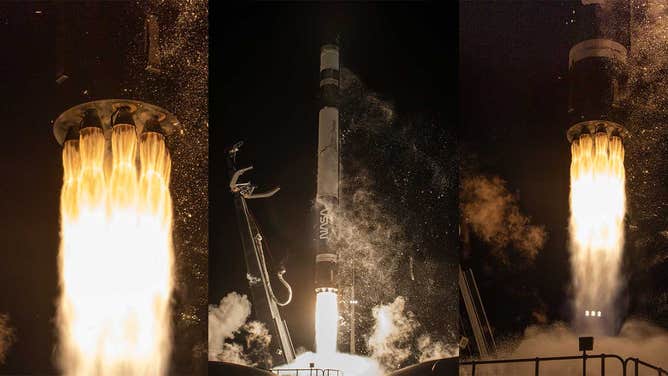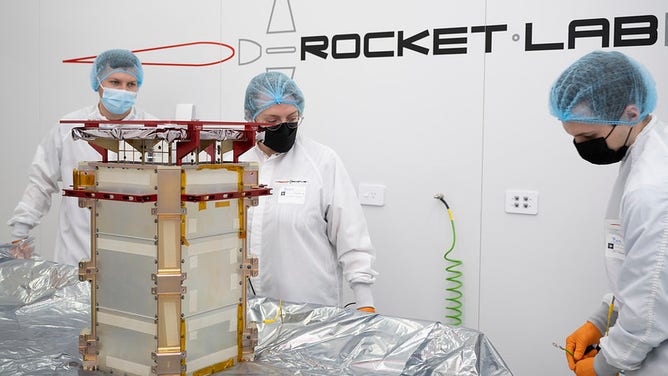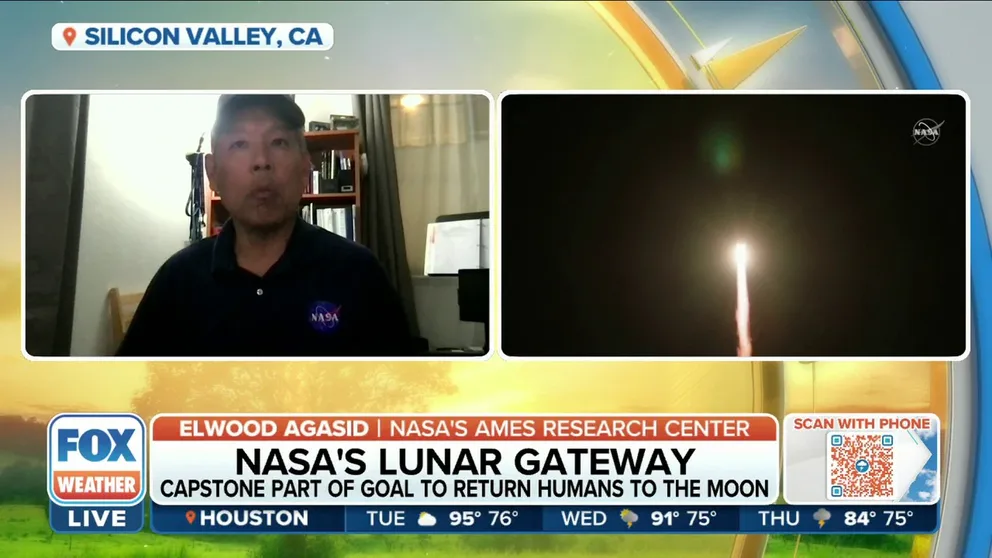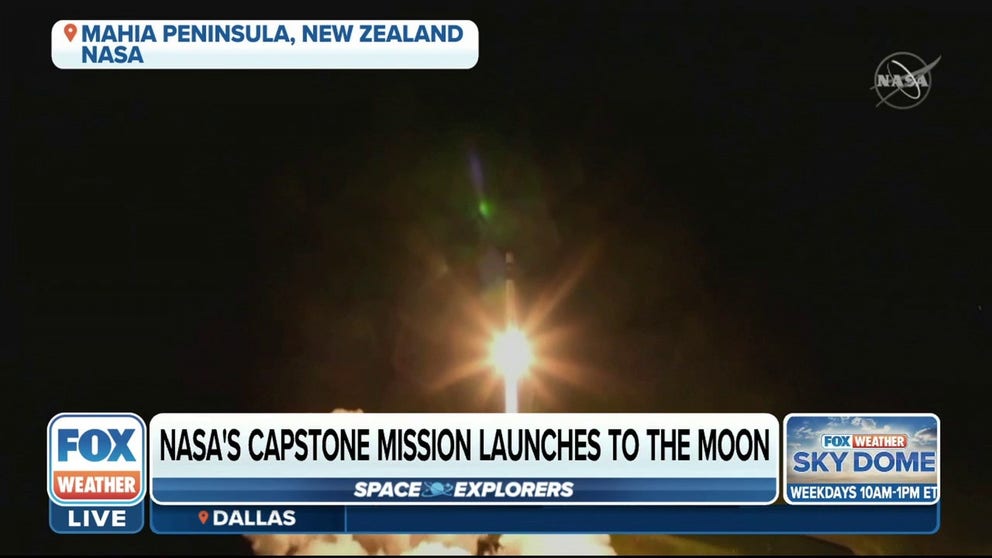NASA spacecraft begins journey to moon after New Zealand launch
Rocket Lab's Electron rocket launches CAPSTONE on the path to lunar orbit
Rocket Lab launches NASA spacecraft to the moon
Rocket Lab launched a NASA spacecraft to the moon on June 28. Elwood Agasid with NASA’s Ames Research Center joined FOX Weather Sunrise to talk more about the launch.
Rocket Lab launched NASA's microwave-size spacecraft from New Zealand on Tuesday, beginning its multi-month journey to the moon, which will pave a path for future human missions.
Electron launched at 5:55 a.m. Eastern time from Rocket Lab's launch complex in Mahia, marking the company's 27th overall mission. Inside the rocket's nosecone was a 55-pound spacecraft operated by Advanced Space for NASA.
HOW TO WATCH FOX WEATHER ON TV
NASA Ames Research Center engineering manager Elwood Agasid said the weather on the Mahia Peninsula was ideal for liftoff.
"It was a perfect day for a launch, weather-wise," Agasid said, adding launch managers keep a close eye on strong winds.
"After the strong back pulls back, the rocket is on its own," he said.

Rocket Lab's Electron rocket lifts off from New Zealand with NASA's CAPSTONE lunar mission. (Image: Rocket Lab)
In high winds, the rocket launch trajectory could be thrown off if the rocket is swaying in the winds, Agasid explained. That was not a problem on Tuesday for the Electron rocket.
According to the New Zealand MetService, winds were around 4 mph Tuesday morning in Mahia.
NASA DEVELOPS "MOON DUSTER" TO ZAP AWAY LUNAR DUST
NASA's CAPSTONE spacecraft stands for Cislunar Autonomous Positioning System Technology Operations and Navigation Experiment. The spacecraft will test navigating around the moon in a Near-Rectilinear Halo Orbit. This is the orbit NASA plans to use for the Lunar Gateway, a small orbiting station around the moon, which is a crucial part of NASA's Artemis moon program designed to return humans to the moon by 2025.
After liftoff, CAPSTONE is in a stable orbit attached to Rocket Lab's Photon Lunar spacecraft, which will provide transportation to set CAPSTONE on the correct course to the moon. The spacecraft will travel more than three times the distance between the Earth and the moon before gravity will pull CAPSTONE back, setting it up for its specialized orbit around the moon.
Watch: NASA's CAPSTONE lifts off from New Zealand facility and heads to moon
Rocket Lab launches NASA’s microwave-size spacecraft from Mahia Peninsula, New Zealand on June 28.
"Today’s launch was an important step in humanity’s return to the Moon and a testament to the determination, resolve, and innovation of the hundreds of people behind CAPSTONE," Rocket Lab CEO Peter Beck said in a statement.

CAPSTONE spacecraft, built by Terran Orbital and owned and operated by Advanced Space, being prepared for payload integration at Rocket Lab Launch Complex 1. (Image: Rocket Lab)
The journey will take about three to four months for CAPSTONE, and the spacecraft should arrive in lunar orbit on Nov. 13.
"While CAPSTONE’s journey to the Moon has only just begun, we’re proud to have safely delivered CAPSTONE to space," Beck said.
WHY SPACE TRASH WILL CONTINUE TO BE A PROBLEM IN LOW-EARTH ORBIT
The $19.98 million mission is considered a NASA technology demonstration mission that will prove Gateway can maintain the same orbit.
The Near-Rectilinear Halo Orbit will take CAPSTONE within 1,000 miles of one lunar pole and then 43,000 miles from the opposite pole at its furthest once a week. According to NASA, this halo-like orbit requires less propulsion for spacecraft flying to and from the moon versus circular orbits.
"Its goals really are to examine a low-energy approach to the moon. It’s a different approach than what’s typically done where it’s a direct injection of spacecraft into lunar orbit," Agasid said.
NASA wants to find a low-fuel launch option to allow more mass and equipment to be delivered to the moon for future Artemis missions.
CLICK HERE TO GET THE FOX WEATHER UPDATE PODCAST
Be sure to download the FOX Weather app to track any storms in your area and receive potentially life-saving weather alerts issued by the National Weather Service. The free FOX Weather livestream is also available 24/7 on the website and app and on your favorite streaming platform. The FOX Weather Update podcast also provides weather information for the entire country.

